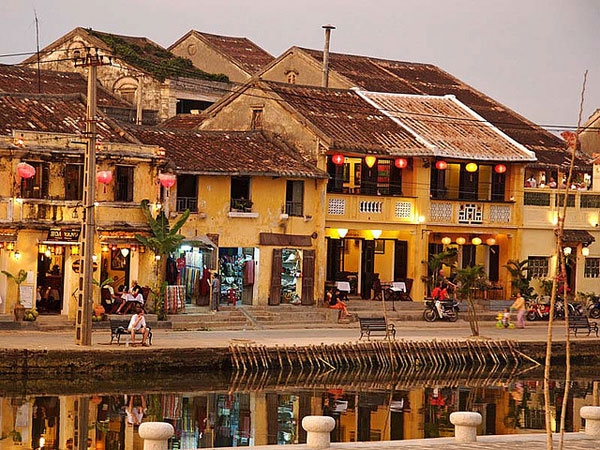 Hoi An Ancient Town - an attractive destination attracting international and domestic visitors. |
Hoi An Ancient Town is an ancient town located in the lower reaches of the Thu Bon River, in the coastal plain of Quang Nam province, about 30 km south of Da Nang. Thanks to favorable geographical and climatic factors, Hoi An was once a bustling international trading port, a meeting place for Japanese, Chinese and Western merchant ships during the 17th and 18th centuries. Before this period, there were also traces of the Champa trading port, which was often mentioned along the maritime silk road.
LIVING MUSEUM OF ARCHITECTURE AND URBAN LIFESTYLE Today, Hoi An ancient town is a special example of a traditional port in East Asia that has been preserved intact and carefully, from streets, houses, assembly halls, communal houses, pagodas, temples, clan churches, ancient wells... to traditional dishes and the souls of the people here. According to statistics in December 2000, Hoi An World Heritage has 1,360 relics including 1,068 ancient houses, 11 ancient wells, 38 clan temples, 19 pagodas, 43 shrines, 23 communal houses, 44 special ancient tombs and 1 bridge. About 1,100 of these relics are located in the ancient urban area. Most of the houses here are traditional architectures dating from the 17th - 19th centuries, distributed along narrow streets. The most popular type of housing in Hoi An is the tube-shaped houses of only 1 - 2 floors with a narrow width and very long depth. The houses are made of materials with high strength and durability due to the harsh climate here, with brick walls separating the two sides and wooden frames. In fact, townhouses in Hoi An consist of many houses arranged in depth and form an architectural space consisting of 3 parts: commercial space, living space and worship space. Each house in Hoi An ensures harmony between living space and nature, so in addition to arranging the house into compartments, the courtyard of the house is paved with stone and decorated with a water tank, rockery, and ornamental plants, creating an overall beauty.
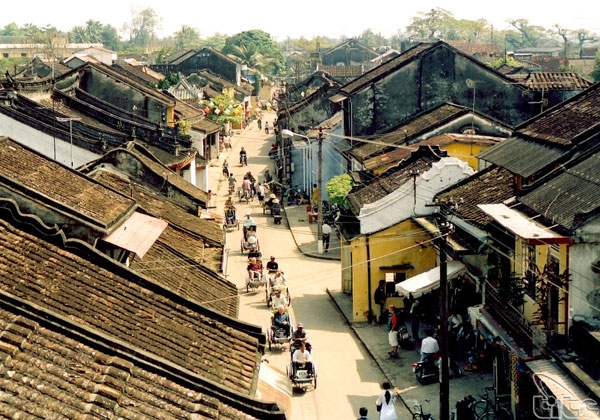 The houses on the small streets have traditional Asian architecture. |
Interspersed among townhouses, religious and belief architectural works demonstrate the process of formation, development and decline of the city. Hoi An used to be an early center of Buddhism in Dang Trong with the majority of temples following the Theravada tradition. Many temples here were built quite early, but most of the original architecture has been changed, even lost through historical changes and renovations. Temples in Hoi An have the main function of worshiping the ancestors who founded the town, the association and Minh Huong Xa. This type of architecture is often simple in form, located right in the village, with a 1 x 3 floor plan, fire-resistant brick walls, yin-yang tiled roofs and an altar placed in the middle room. Hoi An is also a land that marks many cultural blends and exchanges. Assembly halls (Phuc Kien, Trung Hoa, Trieu Chau, Quynh Phu and Quang Dong) and temples bearing traces of the Chinese are located next to traditional Vietnamese townhouses and houses with French architectural style. Besides the cultural values through architectural works, Hoi An also preserves a diverse and rich intangible culture. The daily life of the ancient town's residents with customs, religious activities, folk arts, and cultural festivals are still being preserved and developed. Hoi An is considered a living museum of architecture and urban lifestyle.
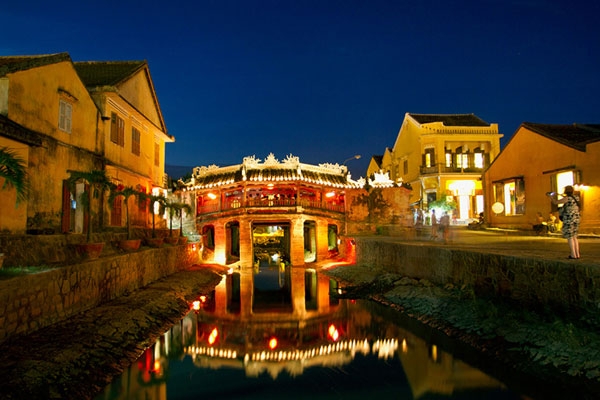 Japanese Covered Bridge - the only remaining ancient bridge in Hoi An today. |
LET THE ATTRACTION REMAIN FOREVER WITH TIME Possessing such values, perhaps in Vietnam, there is no city that attracts tourists from all over the world more than Hoi An ancient town when many people come here many times but still do not get bored because of a strange, inexplicable attraction. In July 2018, the famous American travel magazine Travel & Leisure announced the readers' vote for the top 15 most attractive cities in the world, in which Hoi An ranked 8th. If in 2017, Hoi An welcomed more than 3.22 million visitors; then in just 9 months of 2018, the number of visitors to the city increased to a record 4.55 million. Recognizing the importance of conservation to best promote heritage values, in recent years, the city government has always focused on heritage conservation with many measures, including: issuing management documents; building a support mechanism (for relic owners) to restore degraded relics with a support level of 40 - 75% of the total investment cost; promoting and mobilizing the community to join hands in preserving heritage; creating conditions and mechanisms for more and more people to benefit from heritage; Research, determine the value and restore some forms of local intangible culture... Thanks to the synchronous implementation of measures and the high consensus of the community, up to now, the Hoi An World Cultural Heritage site has basically escaped the state of serious degradation, activities to promote heritage values have been strongly promoted, many tourism products associated with heritage have been invested and developed, contributing to attracting an increasing number of visitors to Hoi An, the quality of life of the people has been significantly improved. The conservation of Hoi An Cultural Heritage has brought certain successes, resolving the relationship between conservation and development, meeting the needs of people's lives, but in reality, there have been many difficulties, challenges, dangers and risks from nature and humans that managers find difficult to control, respond appropriately and promptly. Therefore, to sustainably preserve the World Cultural Heritage of Hoi An, it is necessary to realize that, in addition to creating consensus, joining hands and contributing efforts of the community and stakeholders, identifying risks affecting the values of the heritage site is also very important; heritage management requires a management model and appropriate solution orientations; there are specific actions appropriate to each stage so that Hoi An is worthy of being a typical ecological - cultural - tourist city. Source: https://baocaobang.vn/-3561.html





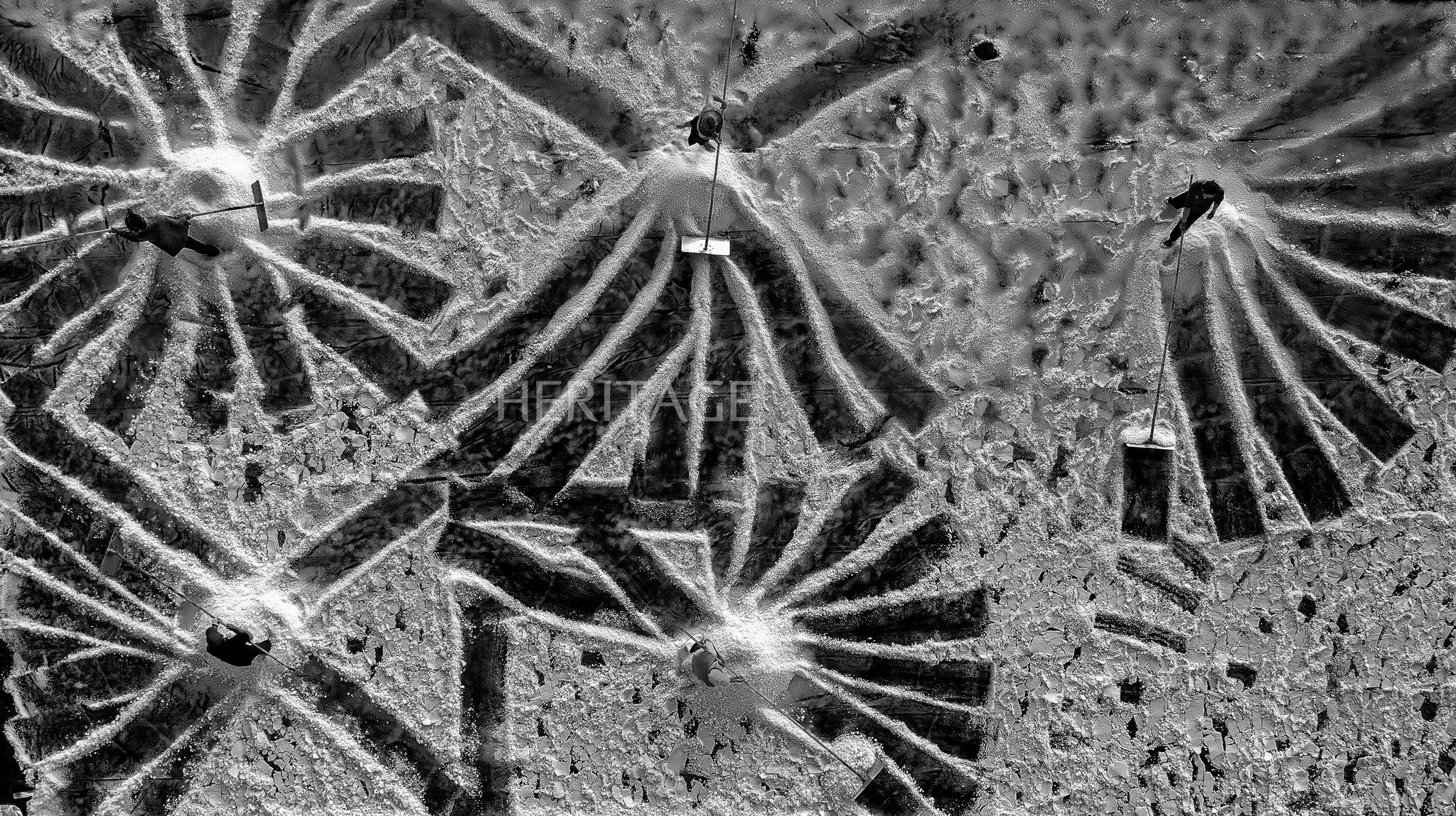




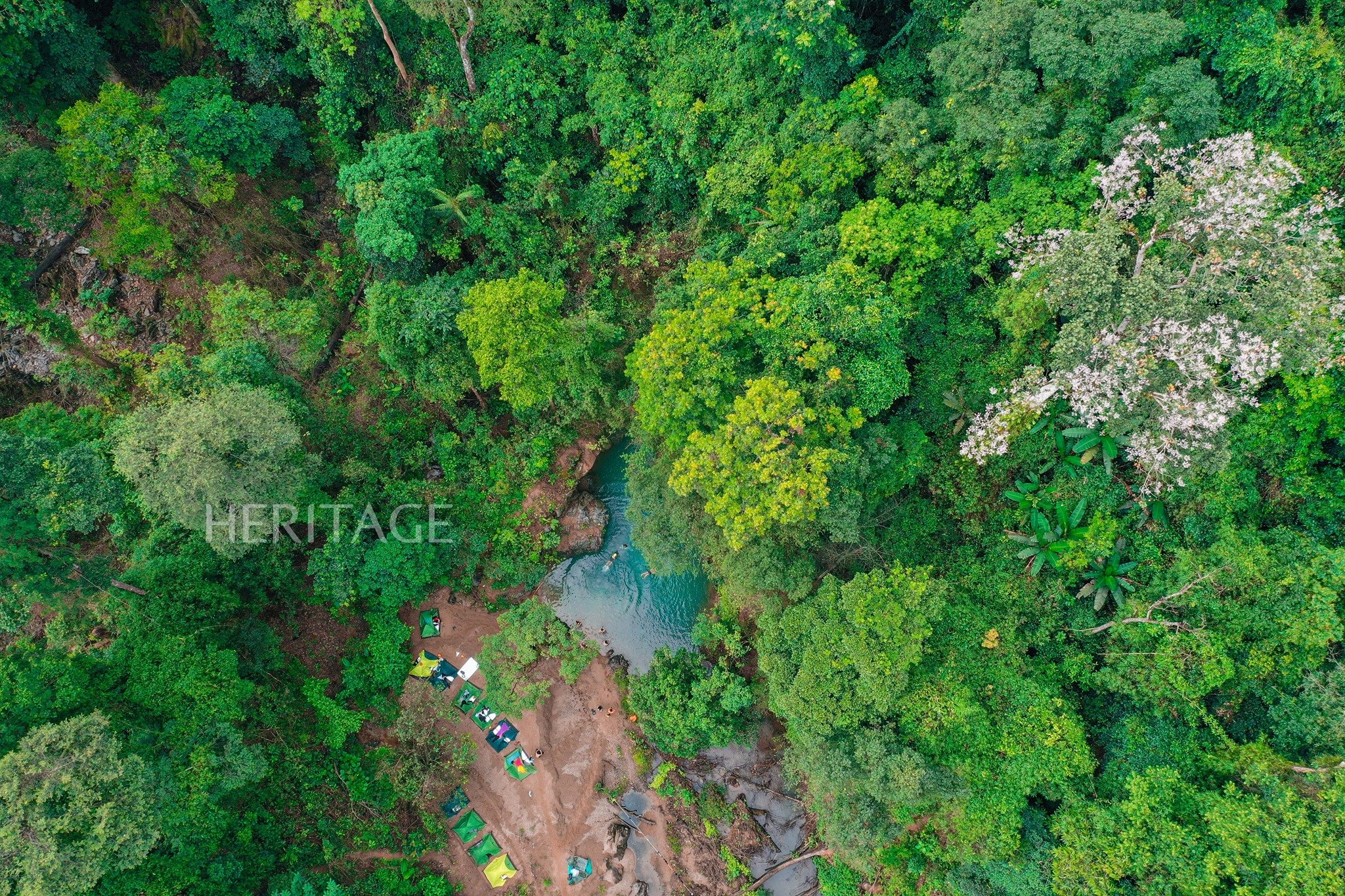
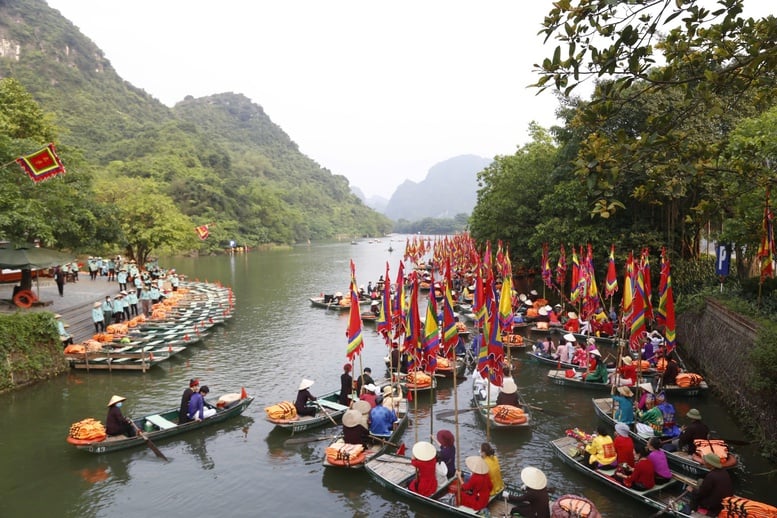



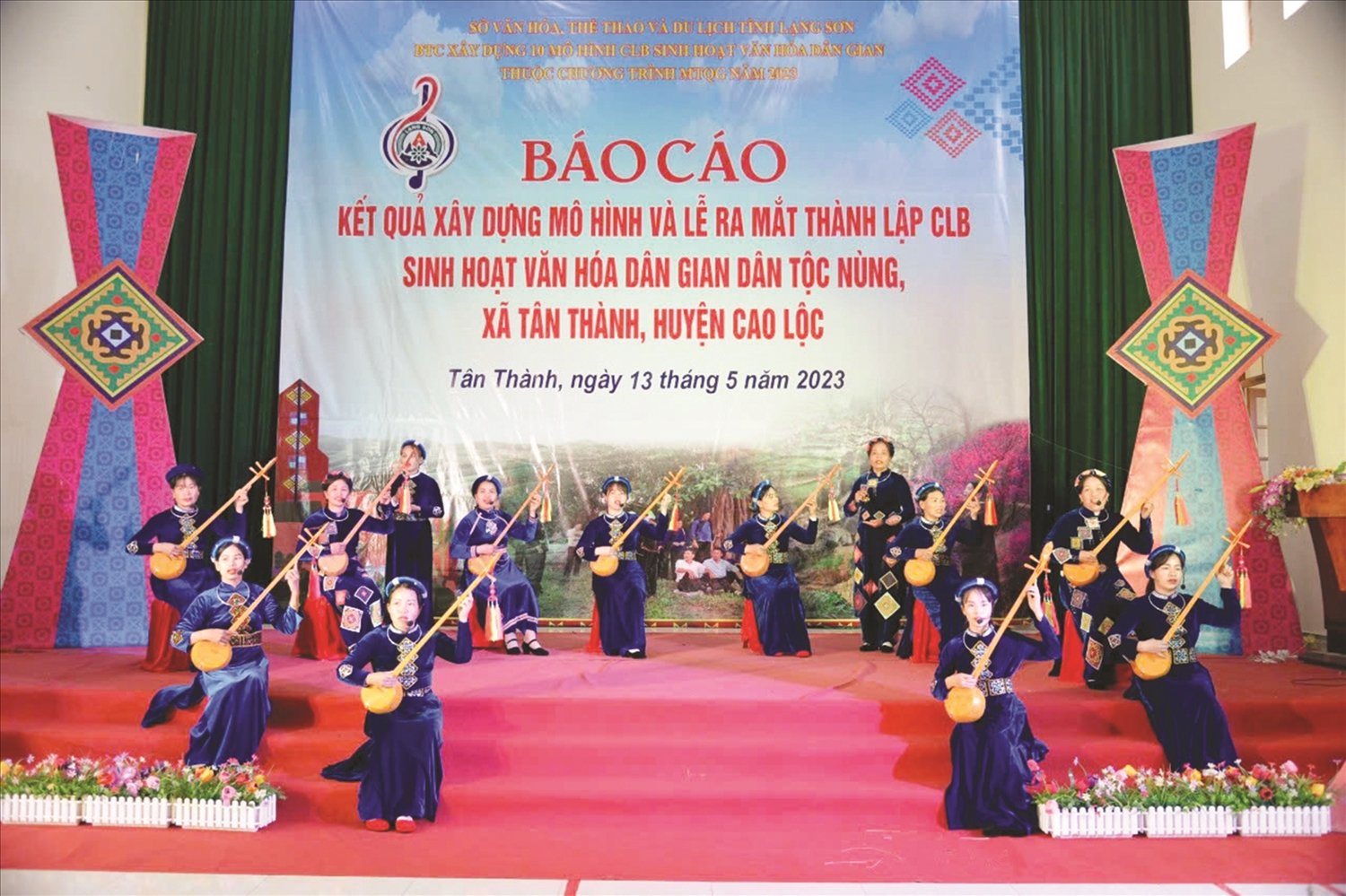

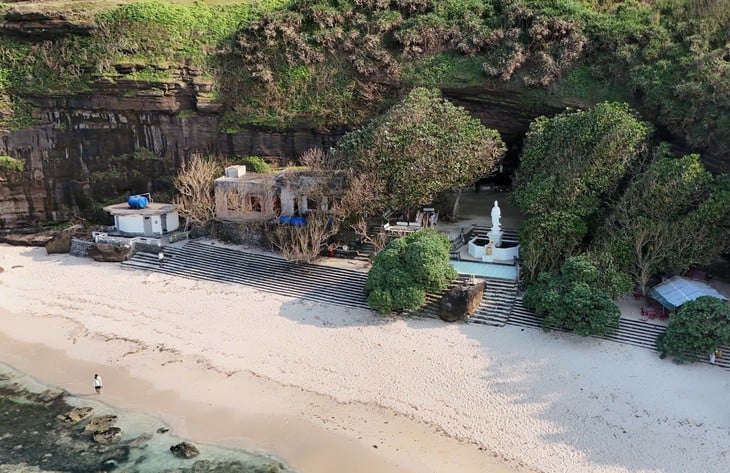

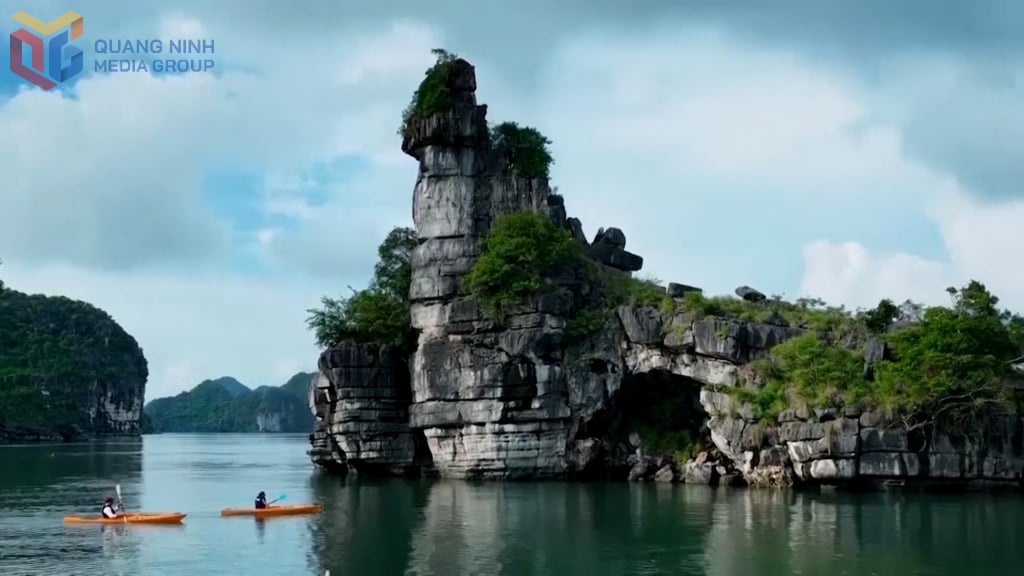

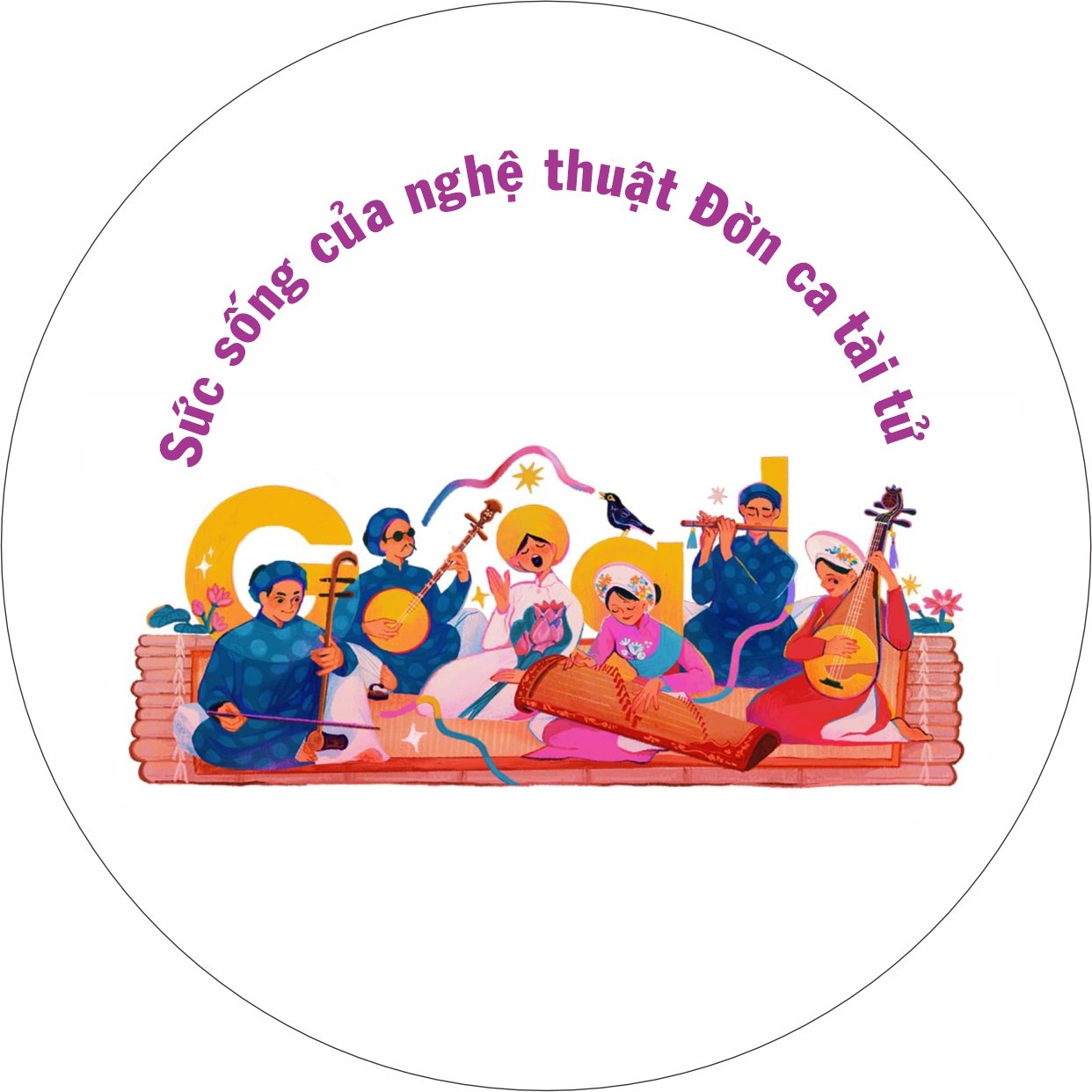


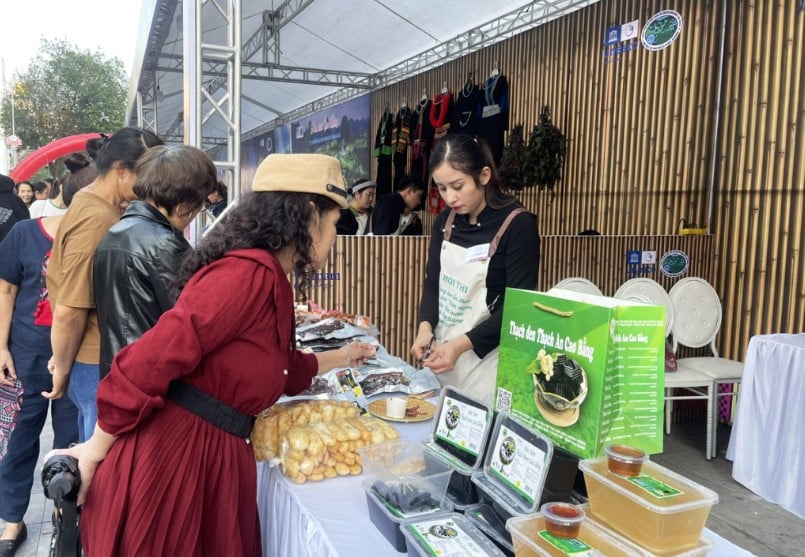



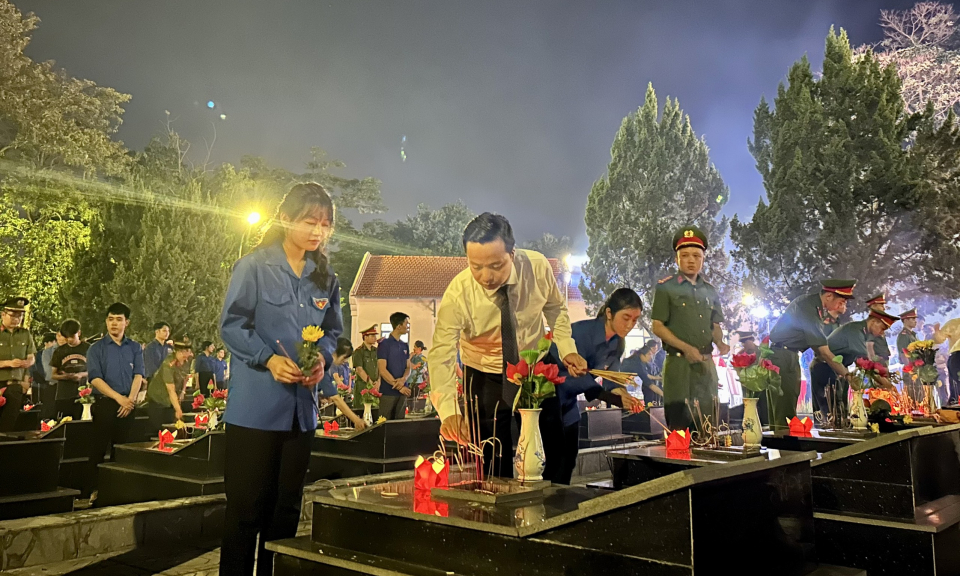


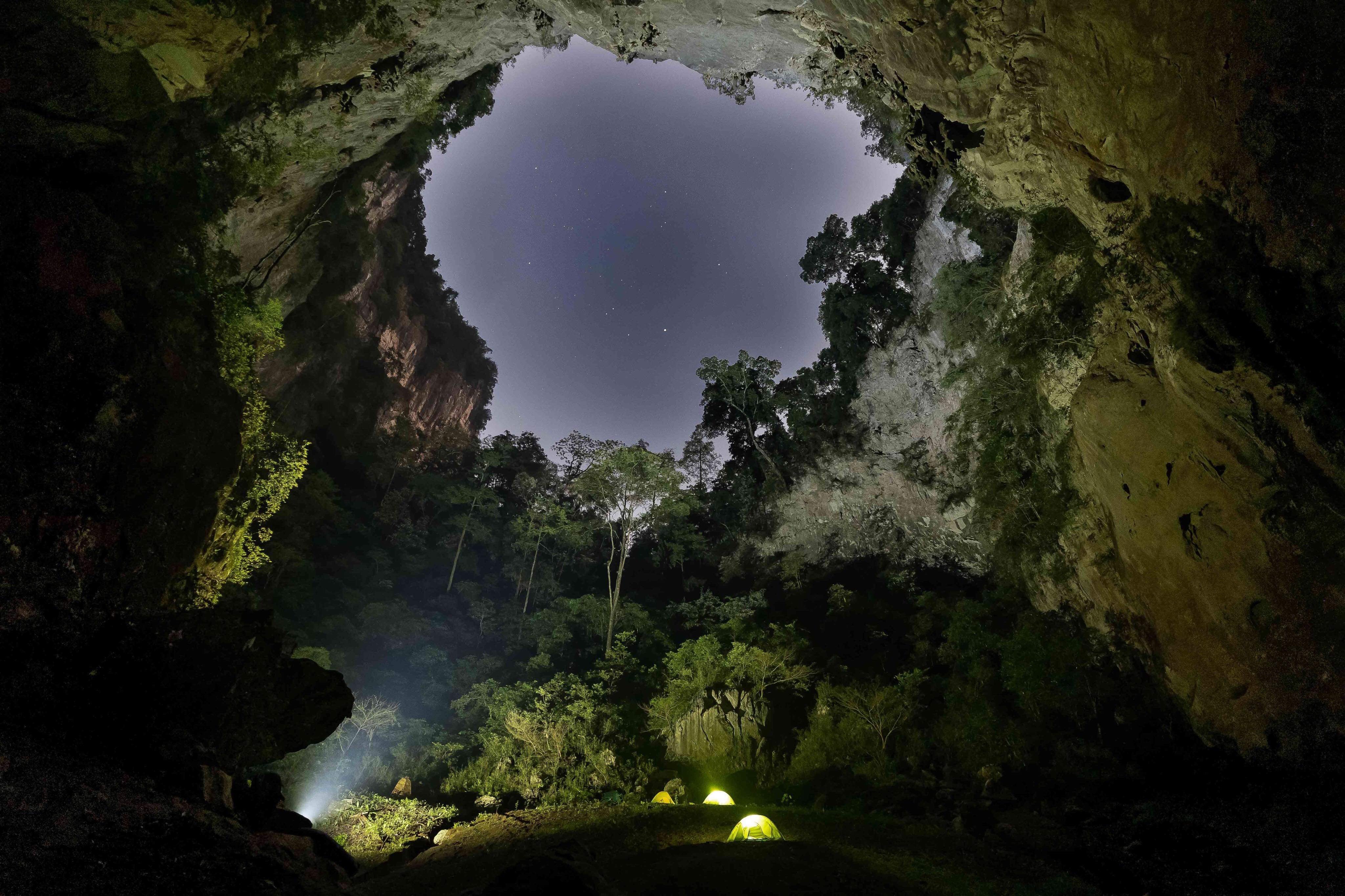
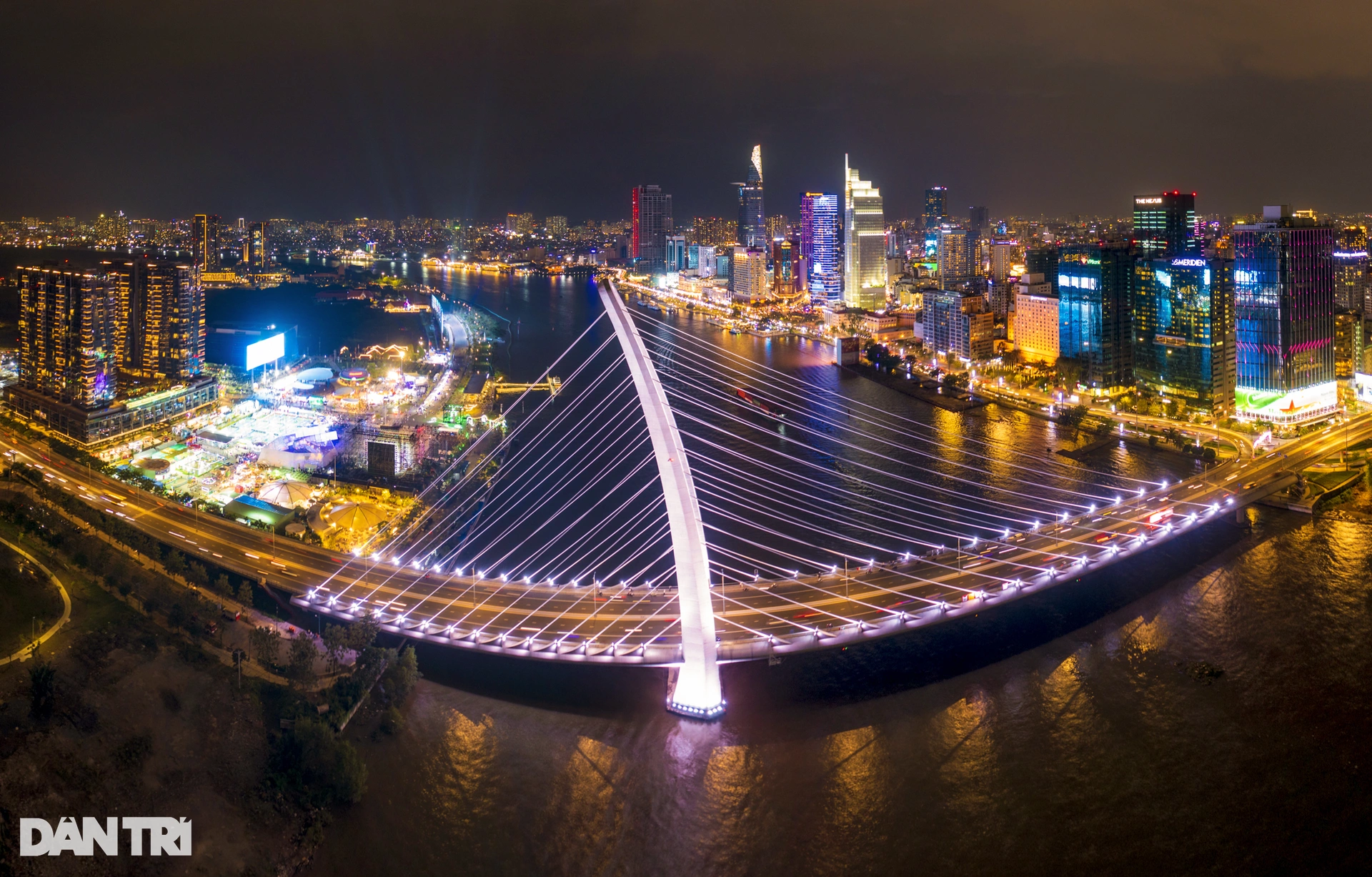






















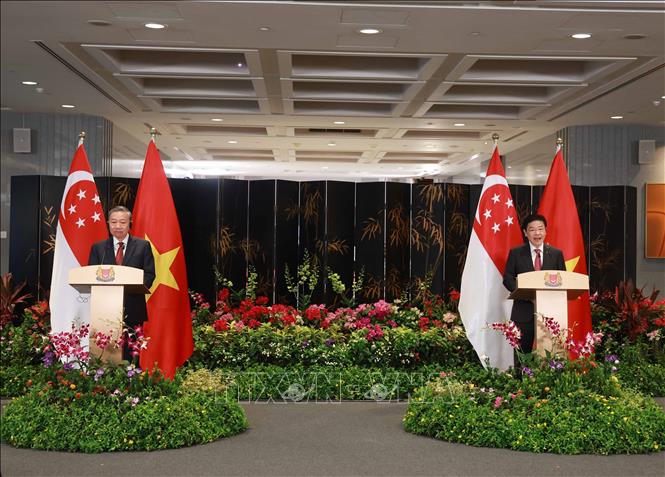






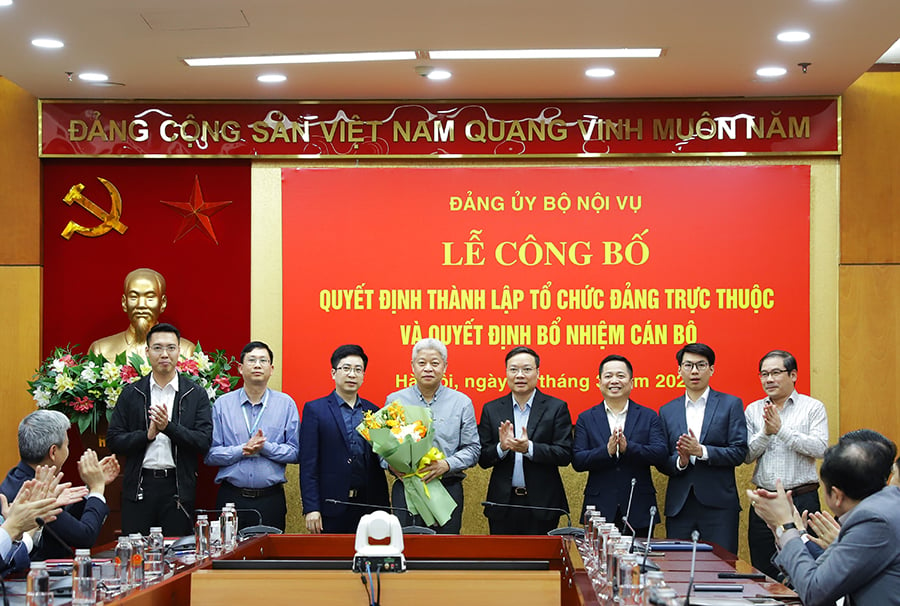



















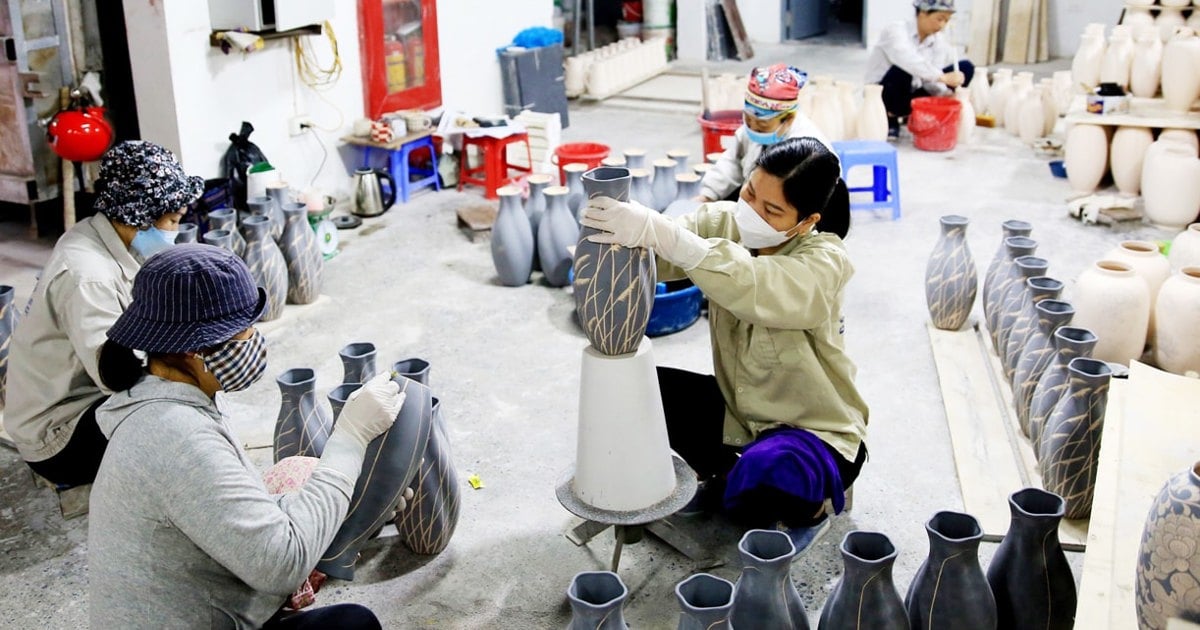

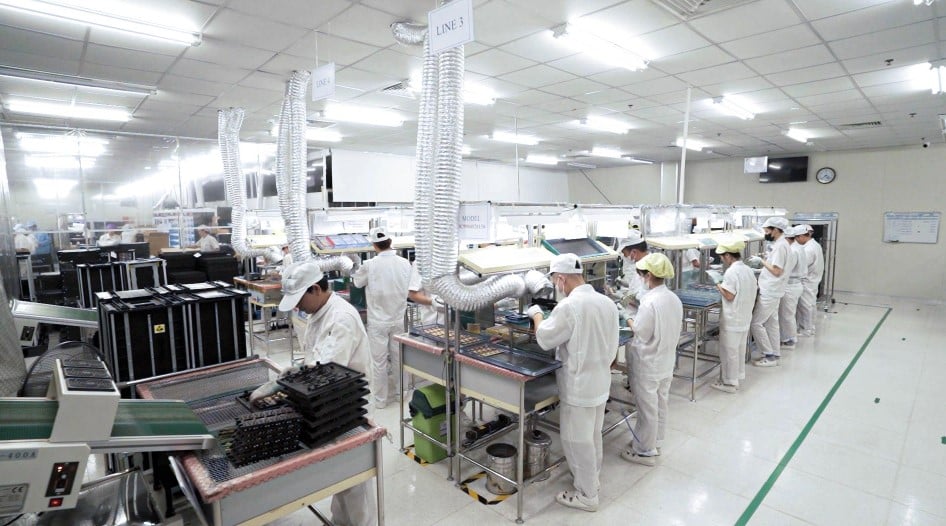
Comment (0)